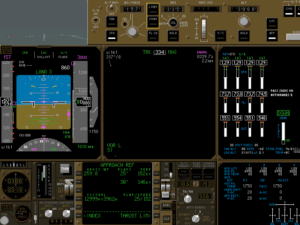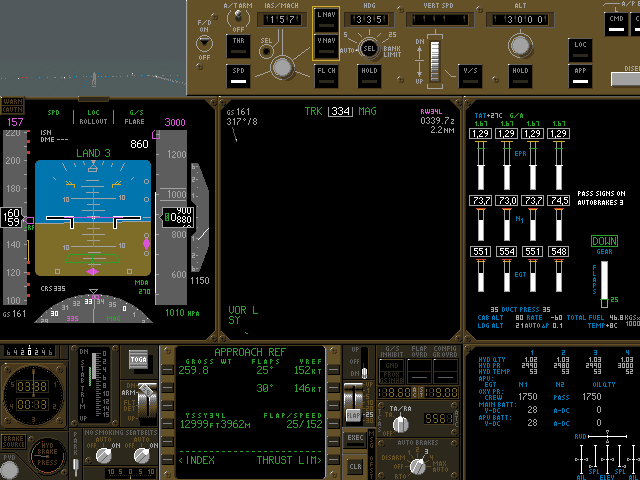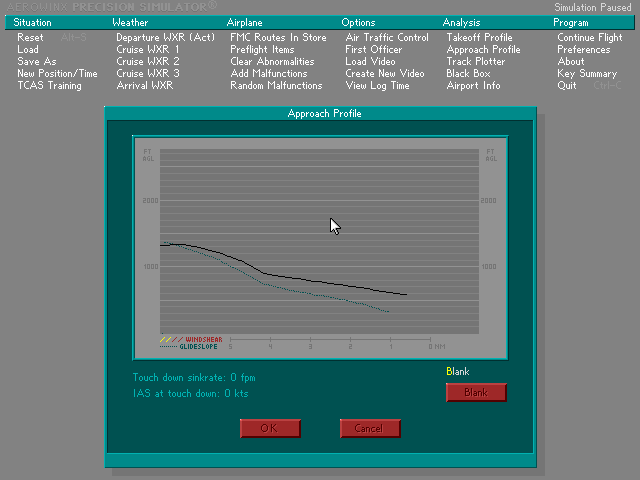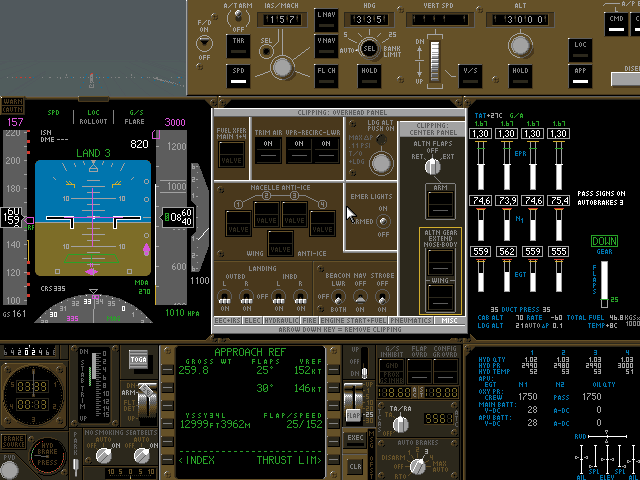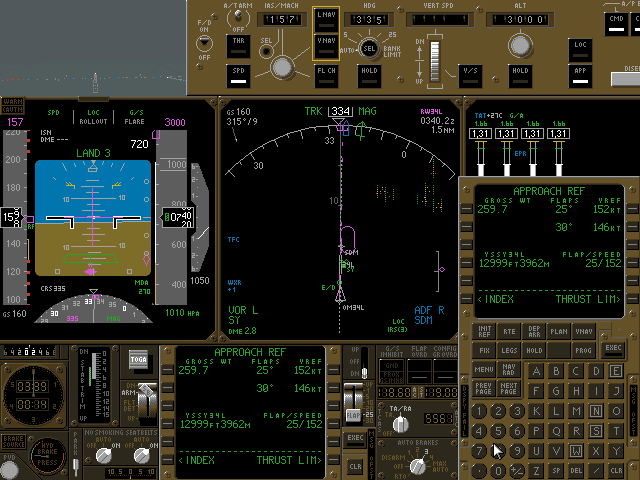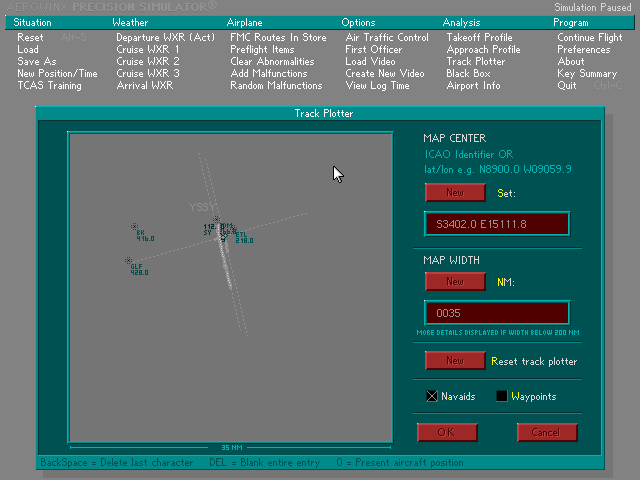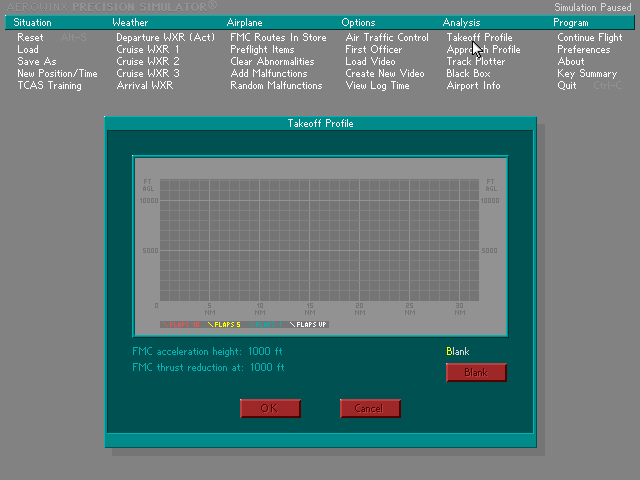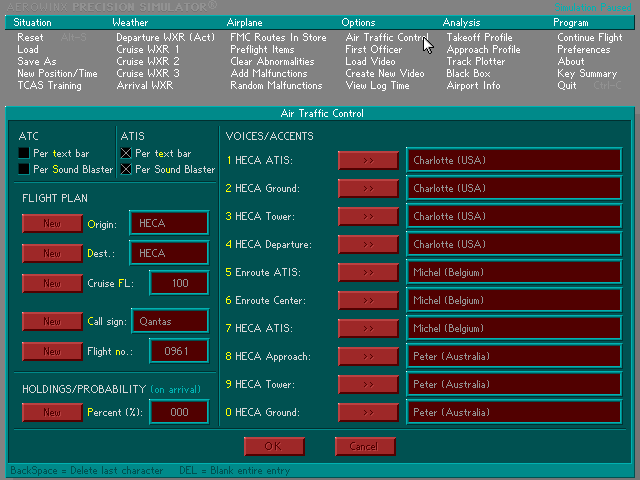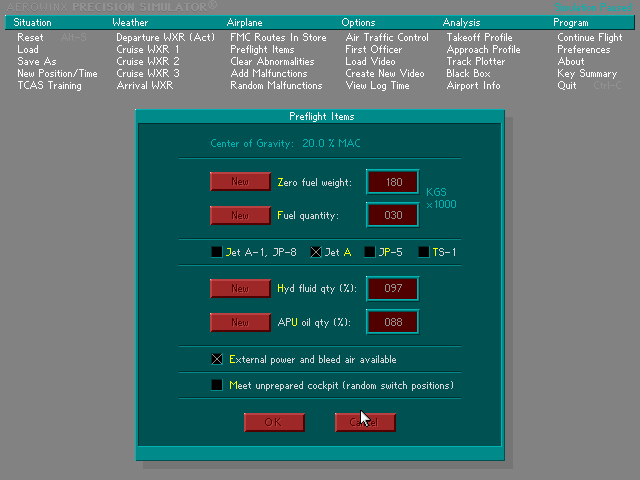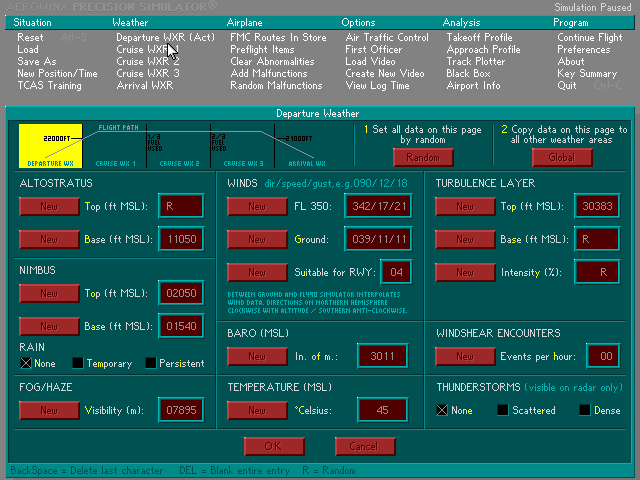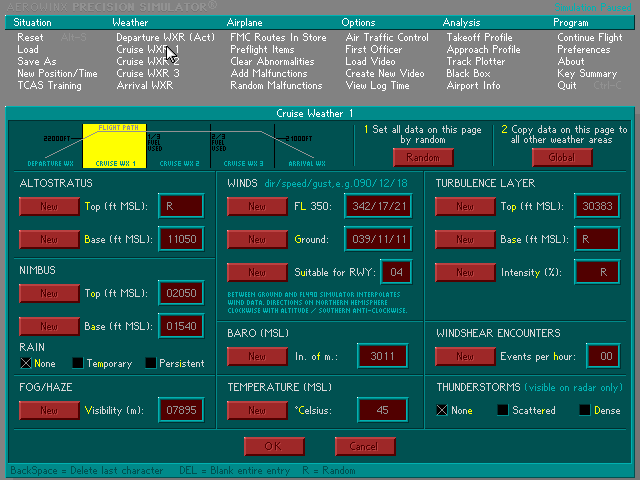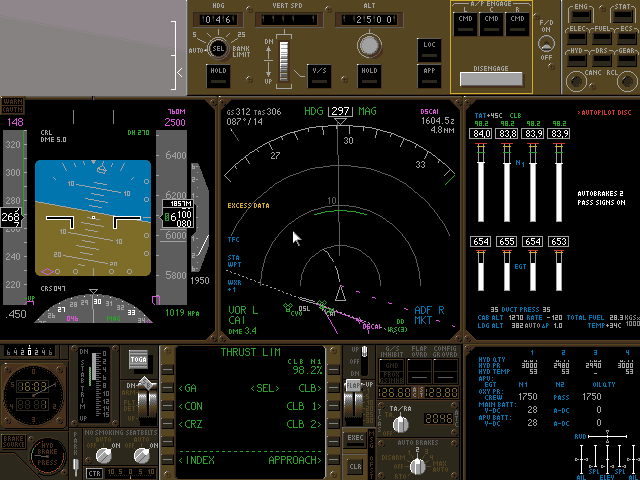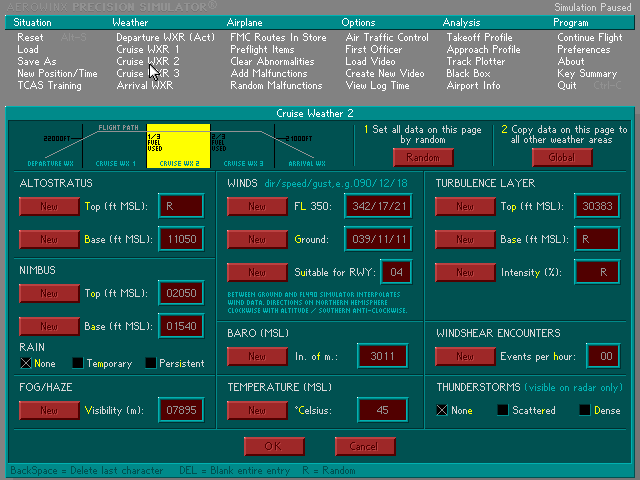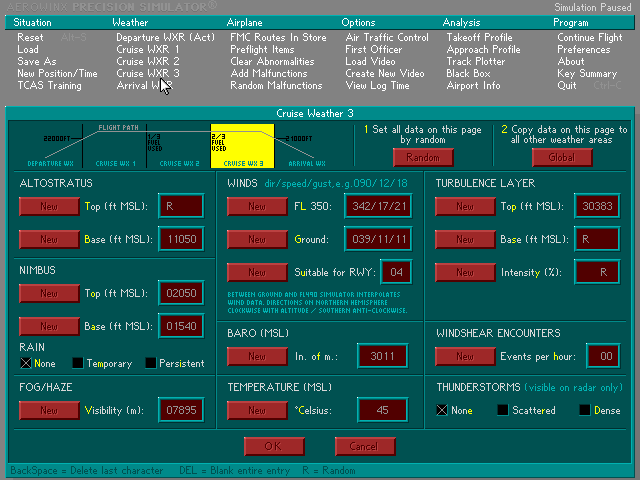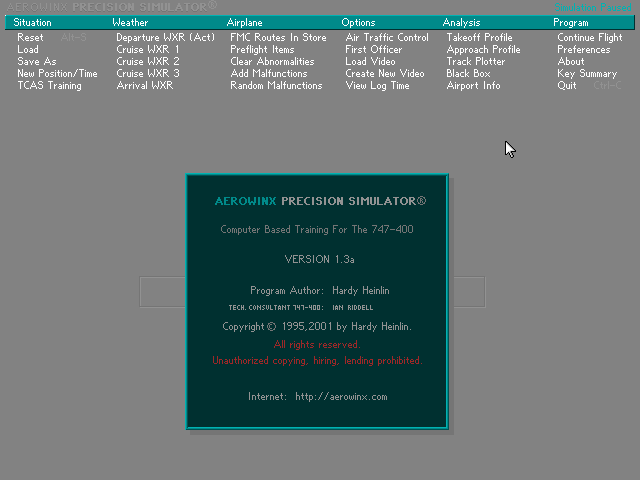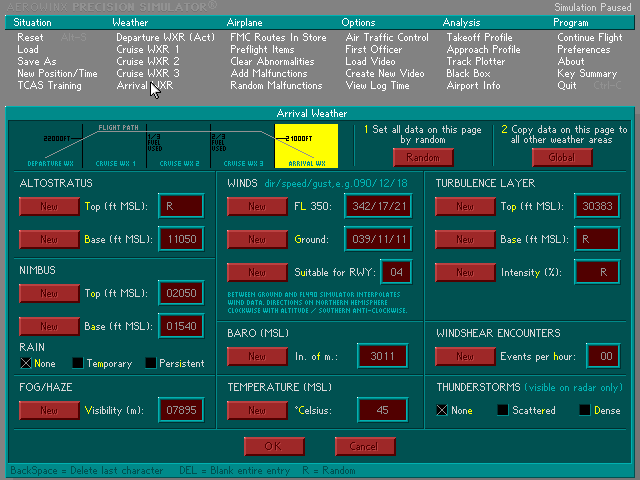747-400 Precision Simulator description
Quite exotic simulator double-Decker wide-body civil aircraft Boeing 747-400 with the stated claim to a good detail modeling. And "exotic" – because its implementation is entirely on the software platform DOS, and it in 2000! It should be noted that for the most part, due to purely technical reasons detailed simulation of civil aircraft implement on the platform of DOS in those years was quite difficult. First of all, because of the huge abundance of indicators, switches, buttons, and small signatures to all of them, and also because of the need to provide different views in the 3D cockpit. To all these queries screen resolution even in SVGA-modes might not be enough. Although, of course, simulation of civil aircraft under DOS, came out in the 1990s, but with significant simplifications. So, attention: 747-400 Precision Simulator offers us the 640x480 screen detailed various types of dashboards, both static and emerging on top, and more... the smallest in the history of the aviasimov the graphics window to display the actual situation on the course before the Board is the upper left corner, the window 186х95, you have never seen! Well, to be honest, in the serious simulator visual "charms" have to move far to the background, and on the ground the pilot will always be impeccable knowledge of materiel and instrument panels, flight safety, and also a very big responsibility for the lives though virtual, but still passengers...
In General, you will see well known by its coffee color instrument panel of a Boeing 747-400. This wide-body aircraft for decades remains a legend, first appeared on Intercontinental routes, in 1970, and only recently he gave the palm to the Airbus A-380. Boeing 747-400 – this is the last modification of the 747, designed to carry more than 600 passengers at distances up to 14 000 km From the other models 747-400 externally distinguished by the presence of the wing tip.
The concept of "glass cockpit" in civil aviation came gradually with the development of computer technology. This term implies the presence on the dashboard in front of the pilots is not a huge number of single-purpose devices,"alarms", and just a few electronic displays, which will display all the necessary information. These facilities theoretically and practically makes it easy to implement such simulations, even for modest modes of resolution of the screen on the DOS platform.
In the simulator 747-400 Precision Simulator you will see the following displays. PFD (Primary Flight Display) is the main flight instrument (located on the left), which displays the artificial horizon, speed, altitude, heading and other important in-flight information. In the center is the display and the HSI (Horizontal Situation Indicator) – without it, impossible navigation of the aircraft, here displayed in a different color scheme, length, trajectory reversals, pointers, glide path, flight rate, etc. This mesmerizing display of non-professionals for its purple-green-blue palette of the intricacies of the lines. Then, to the right, display EICAS (Engine Indications and Crew Alerting System) that displays working parameters of the four engines, the status of the landing gear and flaps. At the top of the screen on the right it is authentic, shows the settings panel of the autopilot. Here switches is very easy to record horizontal speed (IAS), vertical speed (VERT SPD), heading (HDG) and altitude (ALT). In the lower right corner there is a status display of the four hydraulic systems of aircraft operating parameters each: the quality of the oil (HYD QTY), temperature (HYD TEMP) and pressure (HYD PR). In the lowest part of the screen is left for a large calamalka buttons and instruments, landing gear lever, flaps, and also for display display on-Board computer – Control Display Unit (CDU). On top of the screen appear only the upper instrument panel (Overhead Panel) and close-up display CDU with buttons for entering commands and set flight modes. The upper panel (located above the heads of the pilots) was a bit "truncated" developers mode, a small window with scrolling - apparently for reasons of economy of space. The default displayed group switches the anti-icing system, the group of switches navigation, emergency lights and gates, and other groups. The location of the display panels corresponds approximately to a view from a chair in which is FAC. Detailing management model is such that even includes multi-position (OFF, ON, AUTO) switches to indicate when the scoreboard NO SMOKING and SEATBELTS for the passengers!
Authentic sound alarm work in conjunction with two warning indicators WARN and CAUTN located at the left edge of the screen. Also implemented on-Board voice information (and once we did the co-pilot...) for the issuance of standard messages during takeoff and landing speed (in knots), Speed alive, V1, Rotate, Minimals, the height 10 feet and so on...
To fly in manual mode, the layman is not just difficult, but probably not feasible: too clumsy, the liner (maximum takeoff weight – 440 tonnes!). So use the autopilot. User-friendly menu has a huge set of scenarios, takeoff, approach, approach and landing for various airports around the world (of course, they can take on their runway for our hefty "Jumbo"). You can ask a huge selection of emerging in-flight faults – but this is a serious step into the professional use of the simulator. You should make your own detailed FlightPlan's, indicating the key points. For five different flight phases you can set different weather conditions, AEROMETEOROLOGICAL terminology which is striking in its detail.
Mixed feelings. On the one hand, not enough 3D effects and full virtuality in the cockpit, and on the other, you notice the caller the respect of serious professional approach, which even in this description never was the term "game". Indeed, on the tab of the menu section "About" you can read that the app is nothing more than "Computer Based Training for the 747-400". The author of the software product hardy Heinlin has been developing since 1995. And helped him a technical Advisor for the knowledge of materiel 747-400 – Ian Riddell. So it's very serious, comrades. Well, we, in turn, can only highly recommend you this useful simulator as a first acquaintance with the boundless world of virtual civil aviation, before you try gigabytes of modern and complex software products for mothers of simmeron. "Have a nice flight!" and "Clear skies, Captain!".
Wish to enjoy your afternoon playing some classic videogames? Play 747-400 Precision Simulator online for free here.
Source: Archive.org
